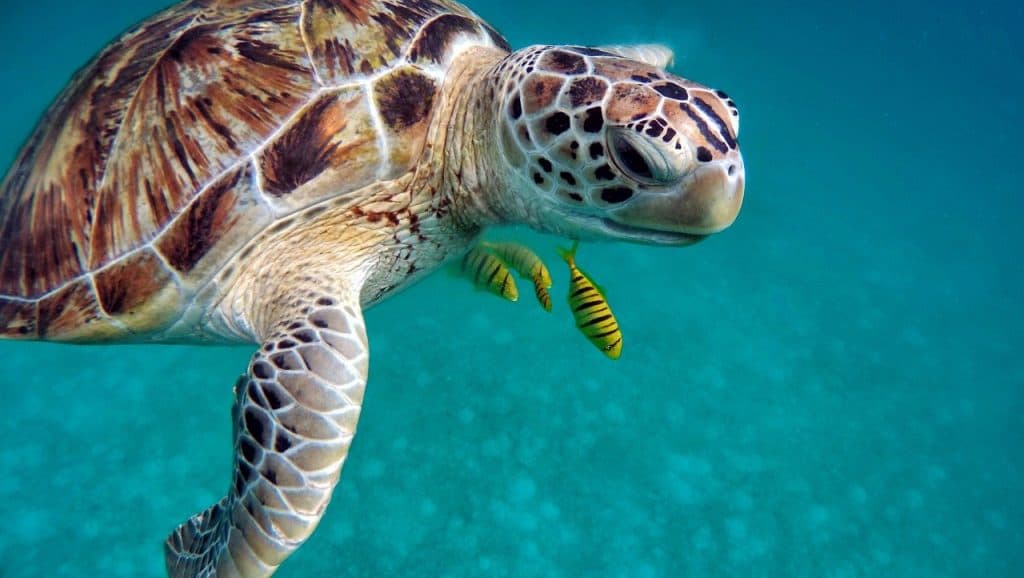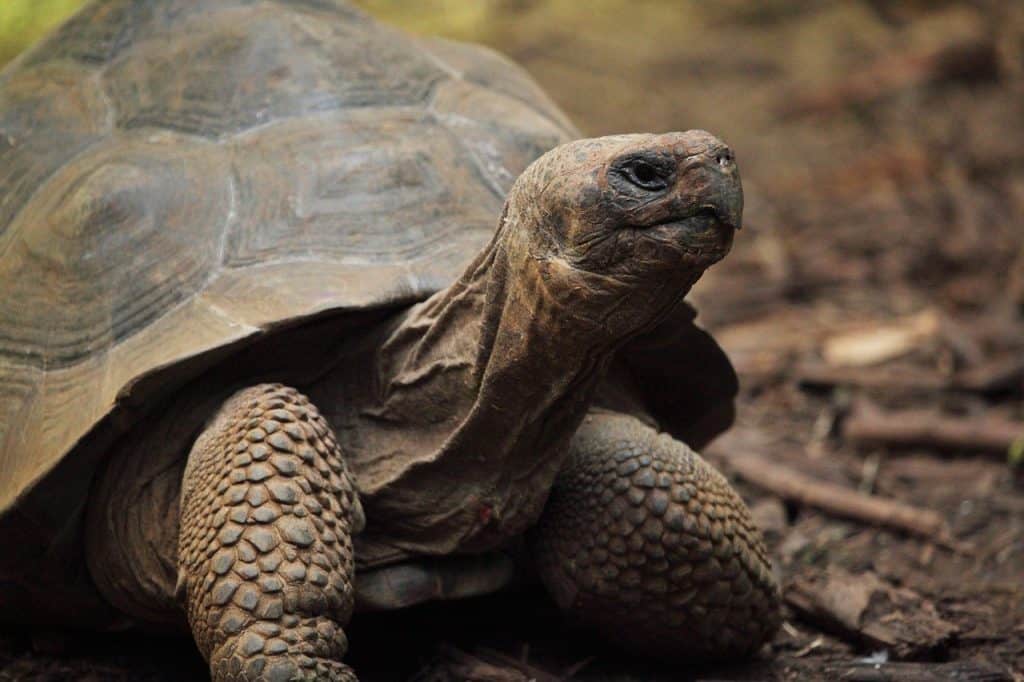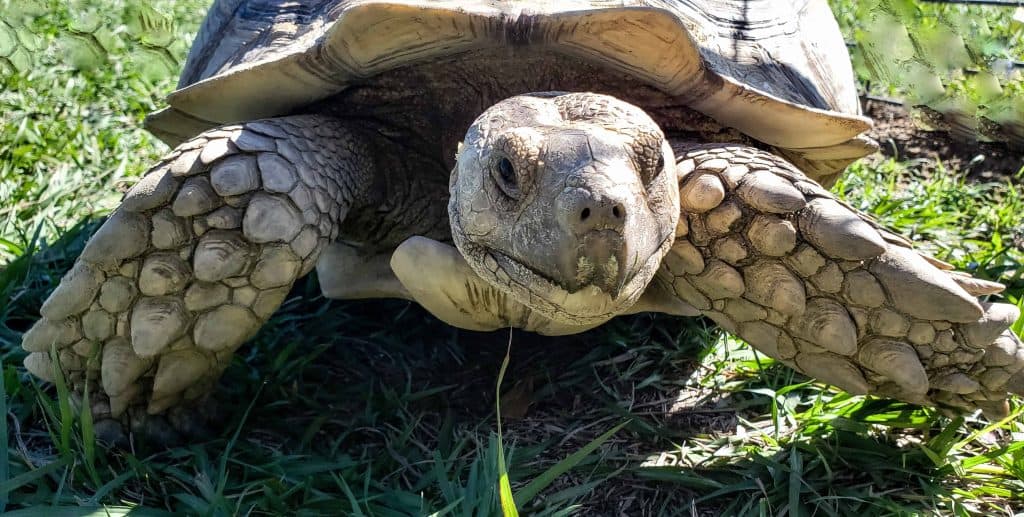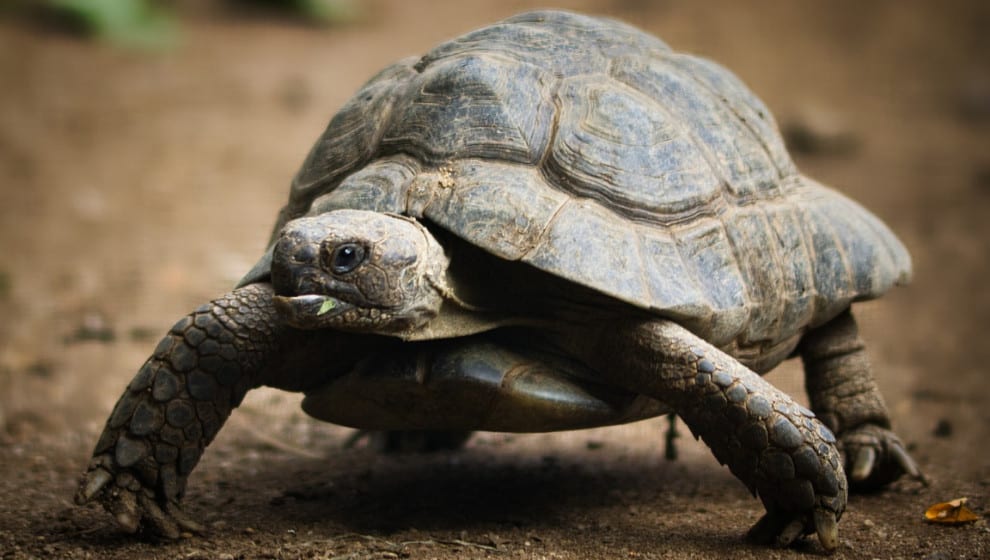Turtles usually live on land and freshwater; some terrapin and turtles live near the sea. Their hard shell covers them to retreat if they got attacked; some can even completely close inside their covering to deceive the enemy. Despite this natural protection, turtles often fall prey to other animals and predators.
Freshwater turtles mostly lose their lives because of their natural predators in the tropics. Most of the turtles are killed by alligators and caimans. They can even crunch their shells to bring them for eating; bobcats and jaguars also attack them while breaking their shells to get the soft fleshy part.
A turtle predator mostly lives in their surroundings, and it depends on their species. Painted turtle and land turtles mostly fall prey to raccoons, foxes, weasels, crows, herons, skunks, gulls, and other giant reptiles, such as snappers, while sea turtle is mostly eaten by whales, sharks, and even dolphins.
Only one percent of newborn turtles reach through the first year of their life; predator attacks and sudden death make it hard for them to survive. Baby turtle struggles to get their nests of the sand and reach for the deeper waters; this makes them vulnerable to the hungry animals.
Table of Contents
List Of Predators
Here to see the list of predators.
Amphibians
Baby turtles are effortless prey for adult frogs while Neil monitor eats their eggs too. Crocodiles have huge size and power, so it is relatively more painless to eat adult turtles. Giant size turtles can also fell prey to these mighty reptiles as they have more prominent jaws and sharp claws to hold their prey firmly.
Carnivores Mammals
Coyotes and foxes easily target turtles for killing this innocent creature to have a slow speed that can make it easy to bite these canning animals. Some domestic dog breeds can prove fatal for the turtles; their teeth can puncture the vital organs. Raccoons are sharp predators. They can even drag turtle’s towards a safe place to eat calmly. Skunks, Ferrets, and Opossums will not hesitate to kill a turtle if they find them alone and weak.
Birds
Vultures seized the turtles and fed on their flesh as a source of food. They can sour high on the sky to reach above the Rocky Mountains to pick up the turtles in their pointy beaks. Seagull grabs the hatchling turtles to reach the ocean while other carnivores also attack turtles to get food such as herons and ravens.
Predatory birds often choose eggs and hatchling turtles while in search of fish, aquatic plants. Crows mostly observe the nesting turtles for keeping eyes on eggs; they wait for the right time to pick up fresh eggs from their habitat. Hawks and eagles can carry small-sized turtles in their beaks quite easily and take it high up the sky and then throw them on the ground; this nasty side of their preying melts our hearts for this unique creature.
Crabs
Ghost crabs on the beach mostly prey on baby turtles, and they reach out quickly from their sand burrows to grab the little turtles and then again hide in the holes. The crabs usually stay in their shelters to spend the hottest time of the day, likely to come out at night, and sea turtles hatch by this time.
Fish
Baby turtles try to reach into the sea’s deeper waters and go under the seaweed beds where much carnivorous fish attack them. Rockfish, snapper, grouper, and barracuda grip them mostly even at a deeper level they can become the prey of tiger sharks; the shark will not hesitate even to kill an adult turtle. Dolphins are considered innocent creatures that seem not to harm any other animal, but they also have food requirements, so Dolphins prey on the sea turtles.
Lizards
This poor creature is not safe from their own taxonomic families, such as other reptiles and lizards. Lizards feel excited about sea turtle eggs and love to swallow them in a single bite. Some species of mighty lizards like Tagus and monitor are sharp nest-raiders; they are famous egg-eaters. Crocodiles are quite fond of eating turtles; even fully adult ones are a big treat for their huge jaws.
Snake
Are you in shock to know this? You probably feel sympathy for the turtles, the snake being also belonging to the reptile tribe never allow to live their babies alive. Snakes can eat various kinds of turtles in one bite, and they consume eggs in a blink of an eye.
Snake eat any animal which they can swallow easily, anaconda will like to eat any turtle and exclusively reptile eggs are a favorite part of their meals.
Rat snakes raid chicken nests, but eggs are acceptable from any animal, specifically from reptiles. Cobras have larger bodies that need frequent nourishment of moisture.
Turtle Life Span
After reaching sexual maturity sea turtle can live a reproductive life of about 30years, that is quite long, but unfortunately, most of their hatchling is eaten by predators. Sea turtles can take a longer time to reach maturity, likely 40years, and have a reproductive life of 20 years that means they, on average, have a 60years life span.
Predators are the reason for the increased mortality rate of turtles, and review a few more essential factors to look at the situation from a different prospect. These factors can mostly make turtles vulnerable to them, and some are related to human selfishness to focus on commercialism instead feel for these adorable animals.
Disease
Fibropapillomas development on turtle bodies can mostly prove fatal for them as it doesn`t identify as a curable disease. This abnormal growth affects vision power, swimming, and feeding behavior of sick animals. Green turtles mostly become a victim of this deadly infection, and it increases the suspicion of parasitism in turtles that finally lead them to death.
Human Life Development
Human development projects harm sea animal breeding, newly constructed resorts, and sea walls reduce the beach nourishment to minimize the available nesting options for sea turtles for a hatchling. Artificial lights, human noise, and trash have wildly disoriented the young turtles breeding. They become easy victims of predators, sometimes smashed by vehicles, die after ingestion trash. Noise proves to distract turtles from compelling them to run back towards the sea instead of finding a comfortable nesting place.
Fish Hooks
Gill nets are designed to catch the fish; unluckily, they can entangle sea turtles also, and as they are widely used in most of the sea, so they are also contributing to increasing the mortality rate of sea turtles. The circle fish hooks are deadly for these poor ones. As of a few years ago ]- shaped curve was more in use for capturing fishes. If this shape is again used frequently instead of that circular one, we can see a visible reduction in the turtles’ mortality rate.
For commercial purposes and an essential food source in various countries, Tuna, Swordfish, and Mahi Mahi breeds are in the market’s highest demand. It makes seawater full of these sharp hooks wandering in water, tortoise mostly swallows them and get themselves hurt to reach death even.
Bottom Line
Sea turtles have more fair chances to get attacked by other animals living around the shallow water bodies. Not human beings look interested in saving this poor creature; many people worldwide are using their eggs as a food source. Although if you are an animal empath, it could be unpleasant to even hear about this. This adorable beauty needs to save for our coming generation. Hopefully, humans will show more interest in preserving the currently existing species of terrapins and tortoise.







